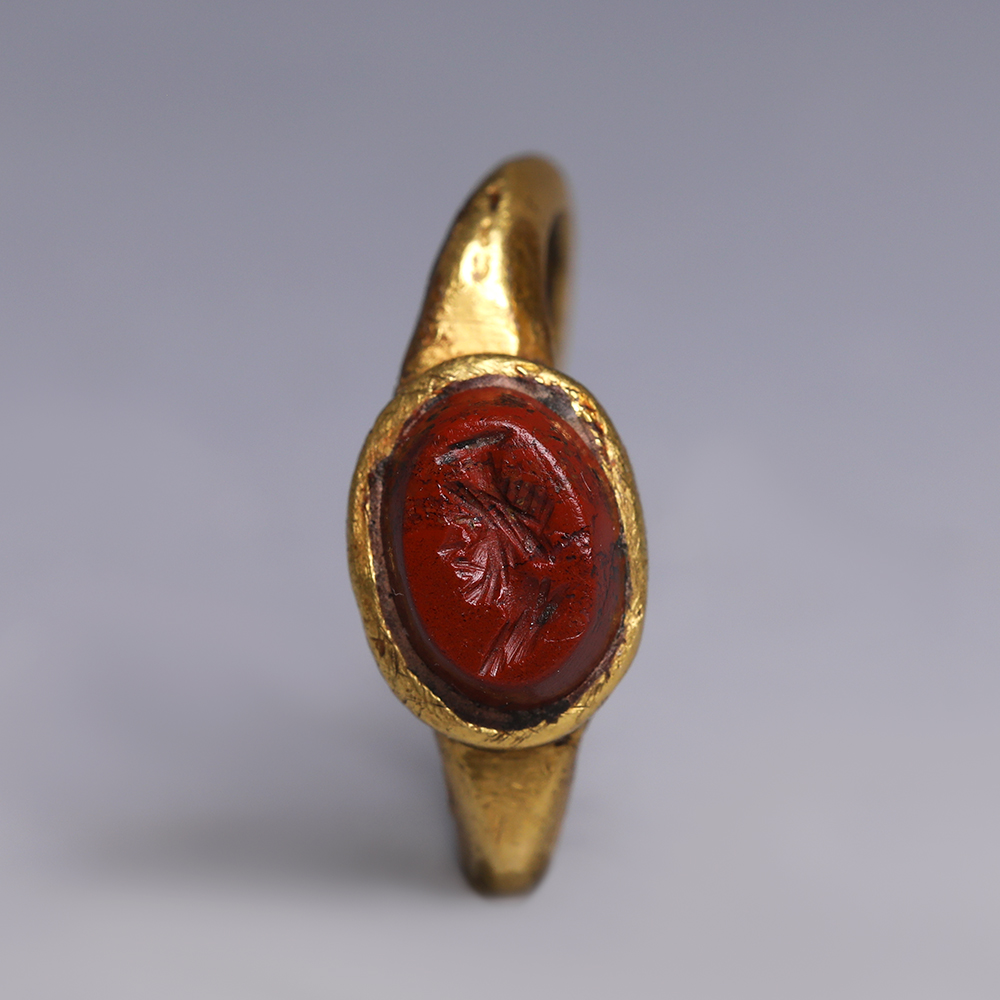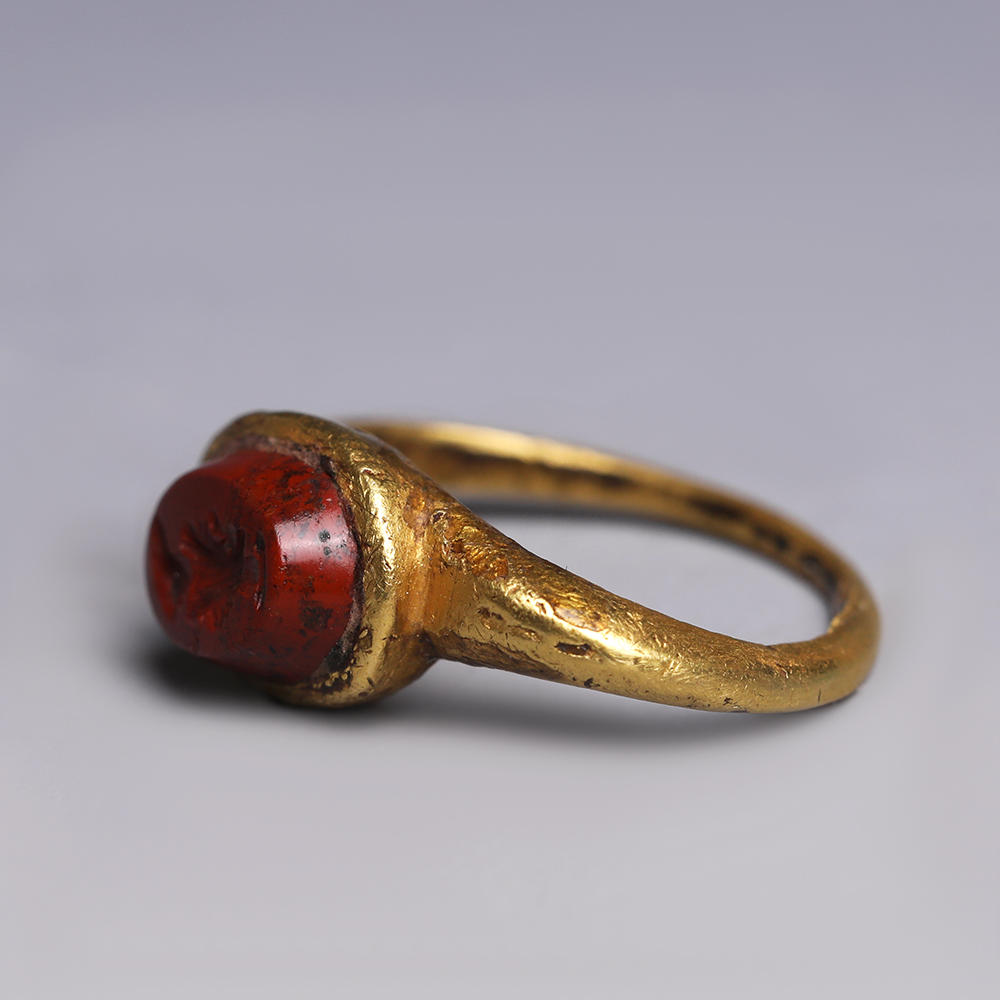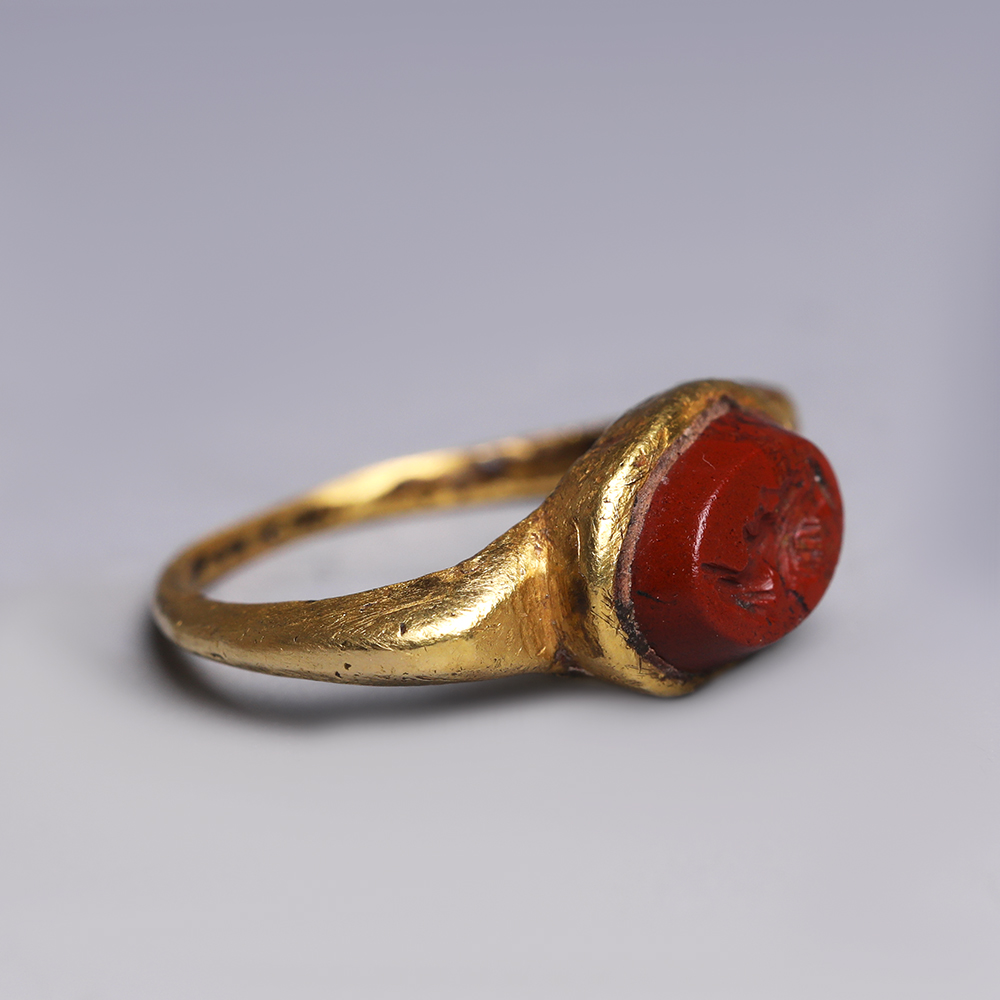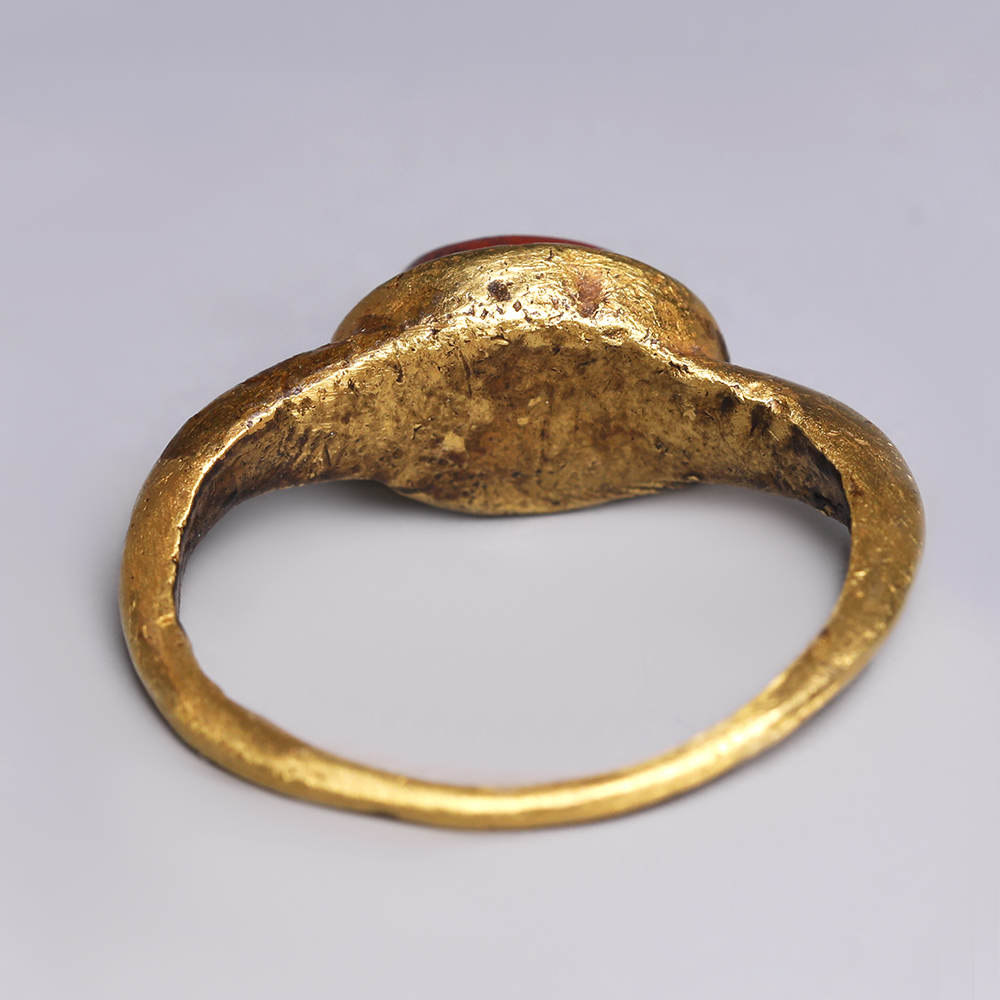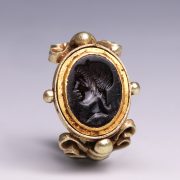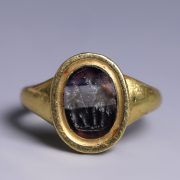The term intaglio refers to a small image that has been engraved into a gemstone and usually set in a piece of jewellery, most commonly a ring. Such artistic form has its origin in Sumer in the 4th millennium BC, with the appearance of cylinder and stamp seals, whereby decorations and patterns were engraved into soft stones. During the Hellenistic period and the early Roman Empire, the art of intaglio reached its apogee, with there being a steady decline in craftsmanship in the late Imperial Rome, until a revival of interest with the Byzantine and during the Renaissance.
The subject used for intaglios are diverse, with depictions of deities being a favourite theme. Serapis (Σέραπις) is a Graeco-Egyptian composite deity, blending the transformative powers of the Egyptian gods Osiris and Apis with the heavenly authority of the Greek god Zeus. His cult was developed under the Ptolemaic ruler Ptolemy I Soter (305-282 BC) as a means to unify his Greek and Egyptian subjects, and later gained popularity throughout the Roman Empire, until it was banned under Theodosius I (AD 379-395).
To find out more about intaglios and Roman gods, please visit our relevant blog posts: Engraved Gemstones in Ancient Rome and Roman Gods in Mythology.
